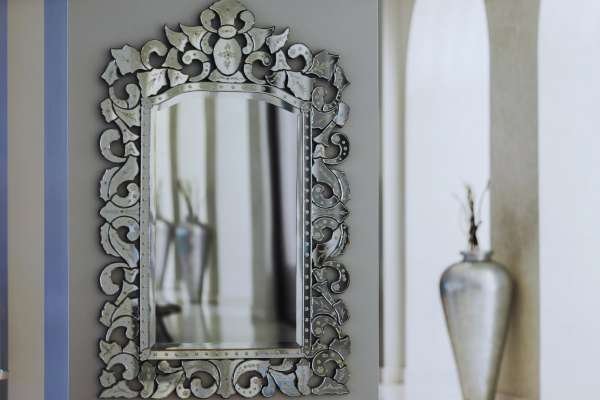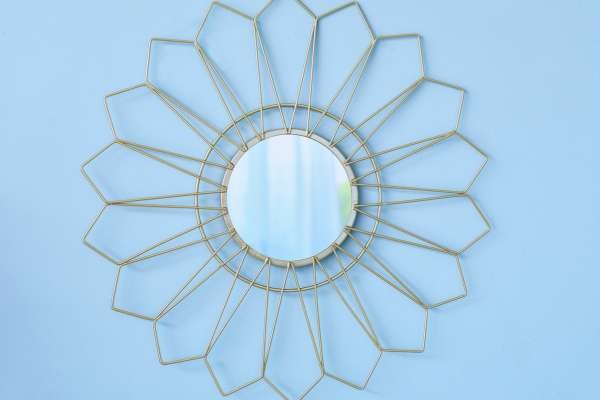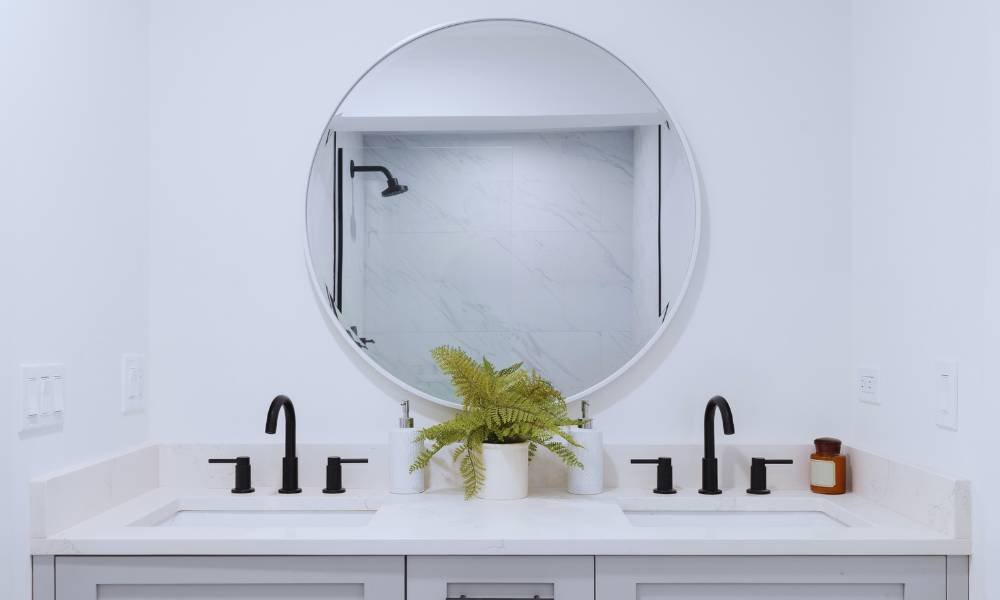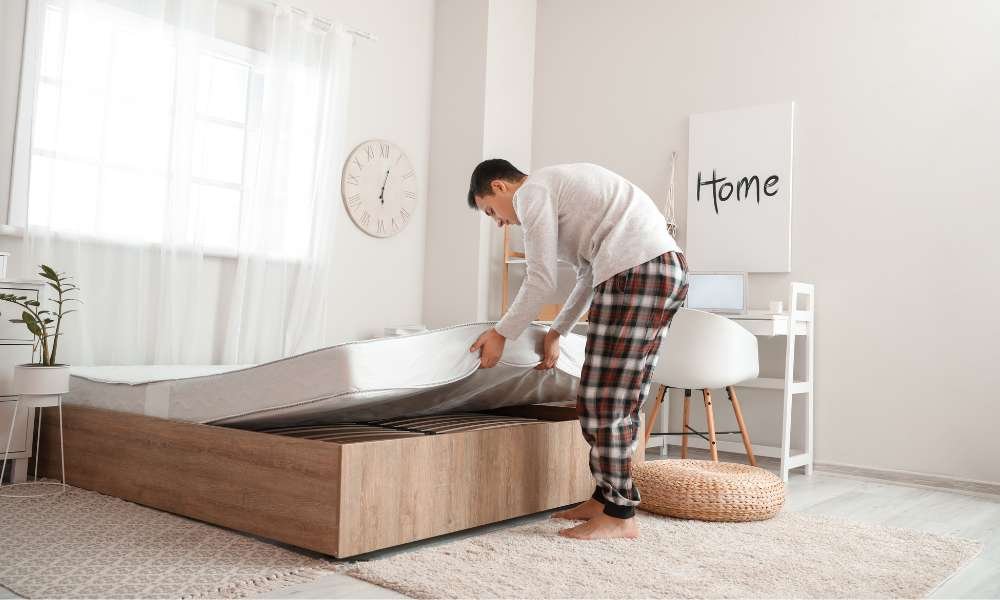Hanging a heavy mirror properly is crucial for both safety and aesthetics. A securely mounted mirror prevents accidents and damage to walls while enhancing your space’s overall look. Following the correct installation techniques ensures that the mirror remains stable and aligned, adding elegance and functionality to your room. This guide on how to hang a heavy mirror on a wall will help you achieve a professional and safe setup, combining practical advice with effective strategies for a flawless finish.
Understanding the Mirror and Wall Types

When hanging a heavy mirror on a wall, understanding the types of mirrors and walls is crucial. **Heavy mirrors** come in various forms, such as **framed** and **frameless**. Each type requires different hanging hardware and techniques to ensure safety and stability.
Wall types also play a significant role in the hanging process. **Drywall** and **plaster** walls typically need partition anchors for secure mounting, while **concrete** and **brick** walls require masonry anchors and a drill. Knowing how to adapt your hanging method based on these wall types will help you achieve a stable and professional result.
Preparing for the Installation
Before hanging a heavy mirror on a wall, gather essential materials and tools, including a stud finder, level, drill, screws, anchors, and measuring tape. For heavy mirrors, opt for robust hardware such as heavy-duty wall anchors and screws designed to support substantial weight.
Measure the wall space and the looking glass dimensions accurately to ensure proper placement. Use the measuring tape to mark the partition where the anchors or screws will go, ensuring they align with the mirror’s mounting points. Accurate measuring and marking are crucial for a secure and level installation.
Finding and Using Wall Studs
**Locating Studs**:
ensure a secure hang for your heavy mirror, and use a stud finder to locate wall studs. This device detects changes in wall density, helping you pinpoint the wooden or metal supports behind drywall. Accurate stud detection is vital because heavy mirrors need the support of these sturdy structures to prevent them from falling.
**Marking Studs**:
Once located, mark the stud positions lightly with a pencil. This ensures you drill into the studs, providing the necessary support for the screws or anchors. Proper marking aligns your hardware correctly, enhancing the mirror’s stability and safety.
Installing the Hardware
Choosing the right hardware is crucial when hanging a heavy mirror on a wall. Different partition types—such as drywall, plaster, or concrete—require specific anchors and screws to ensure a secure installation. For drywall, use heavy-duty partition anchors; for concrete, opt for masonry anchors. Ensure the hardware matches the mirror’s weight to avoid accidents.
The installation process involves precise steps. Start by drilling holes for the anchors or screws based on your marks. Insert the anchors and then screw them in until they are flush with the wall. Use a level to verify that everything is aligned correctly. Properly secured hardware is essential for a stable mirror.
Hanging the Mirror

**Preparing the Mirror**:
Safely lift and position the heavy mirror by using proper lifting techniques and seeking assistance if necessary. Ensure you have a clear path and use protective gloves to avoid accidents.
**Aligning and Mounting**:
Align the mirror with the installed hardware by carefully positioning it according to your markings. Secure the looking glass by gently pressing it into place and checking its level with a spirit level. Confirm that it is firmly mounted and evenly positioned before finalizing the installation. This ensures your mirror is both secure and visually appealing.
Final Adjustments and Safety Checks
Once your mirror is hung, ensure it’s perfectly aligned by using a level. Adjust the looking glass as needed to achieve a straight and centered look. For a thorough safety check, gently press on the mirror to test its stability and ensure it is securely mounted. Regular maintenance is crucial; periodically inspect the looking glass and its hardware to prevent issues. This includes checking for any looseness or signs of wear. By following these professional tips, you can ensure your mirror remains both aesthetically pleasing and safe on the wall.
Troubleshooting Common Issues
**Uneven Hanging**:
If your mirror isn’t level, first check the mounting hardware for alignment. Use a level tool to identify the exact point of unevenness. Adjust the hardware or reposition the looking glass until it’s perfectly straight. Tighten all screws and anchors securely to prevent further shifting.
**Wall Damage**:
During installation, minor wall damage can occur. Patch small holes with spackle or partition repair compound, then sand smooth once dry. For larger damage, you might need to use a wall repair kit. Ensure the partition is properly prepped before reinstalling the mirror.
**Mirror Shifting**:
If your mirror starts to shift, check the hardware to ensure it’s securely anchored. If the looking glass is still moving, reposition the anchors or screws and rehang the mirror. Regularly inspect the installation to prevent future issues.
Conclusion
In conclusion, hanging a heavy mirror on a wall involves careful planning and the right tools. First, identify the type of partition and locate the studs. Choose appropriate hardware such as wall anchors or screws that can support the mirror’s weight. Mark the mounting points accurately, install the hardware, and then carefully hang the looking glass, ensuring it is level.
For a successful installation, double-check the mirror’s stability and make any necessary adjustments. Regularly inspect the hardware to ensure the looking glass remains securely mounted. Following these steps will ensure a safe and attractive display of your heavy mirror.
FAQs: How to Hang a Heavy Mirror on a Wall
1. What type of wall anchors should I use for a heavy mirror?
– Use heavy-duty wall anchors or toggle bolts for drywall, masonry anchors for concrete or brick, and appropriate screws for plaster.
2. How do I locate wall studs to hang a mirror?
– Use a stud finder to locate studs behind drywall. Mark their positions to ensure you anchor screws into the studs for maximum support.
3. Can I hang a heavy mirror without using wall anchors?
– For maximum stability, especially with heavy mirrors, it’s best to use wall anchors or screws. Avoid relying solely on nails or hooks.
4. How can I ensure the mirror is level when hanging it?
– Use a spirit level to check that the mirror is even. Adjust the positioning of the hardware if necessary before securing the looking glass.
5. What should I do if the mirror is not securely mounted?
– Check that the hardware is properly installed and the wall anchors are suitable for the weight of the mirror. Make adjustments or reinforce the mounting as needed.



